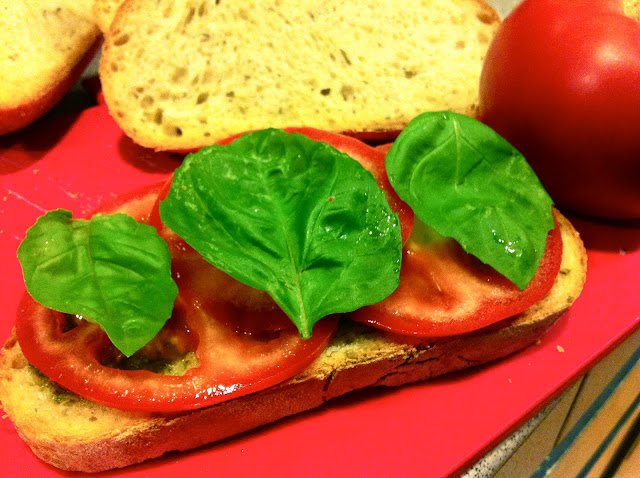For anyone who’s ever met me, this will not come as a surprise: I love pasta.
Most of the time, we love what we grow up eating. I say most of the time, because this is often, but not always, the case. My great aunt, who grew up during the great depression and ate baked beans for breakfast, lunch and dinner, refused to eat them ever again the second she learned how to cook for herself. According to the stories, she never once made baked beans for her family. Not surprising, I guess. Her brother, my grandfather, however, still adores them despite the monotony of years of beans with a side of beans and an extra helping of beans, please. So I stand by my theory.
It’s the case with many things in life—the songs we listen to on repeat in the car when we first get the CD, the surprisingly addictive flavor of gum we happen to snag from the checkout counter at the grocery store, the haircut we have. Once these things make it past the initial phase of obsession, through the phase of repulsion that's natural with repeated overexposure, and into the third and final phase of unexciting, but utterly familiar, comfortable, and companionable love: they usually stick for life. My aunt and her love for 70s rock, my mom's father and his golf, my dad's father and his baked beans, my dad and his 6th grade haircut. I grew up with an Italian grandmother. I also, therefore, grew up with pasta. Needless to say, I am in that third phase. It seems it's stuck for life.
 When I’m sick, when I’m happy, when I'm upset, when I’m starving, when I’m in desperate need of comfort food, when it’s raining, when it’s hot out, when it’s Tuesday, when I’m wearing red, when I’m breathing. Anytime is an appropriate time for pasta. It wouldn’t even be a lie if I said I’d eaten pasta for breakfast—don’t judge. One fateful night while on an outing in New York’s Little Italy, I even ate pasta on top of pizza. Heaven on earth? Jury’s still out on that one but I’m leaning towards yes. Again here people, don’t judge. Everyone has that one food that just never gets any less, well, good—no matter how young you are or how old you get, how many pounds you gain, or lose, or how many changes your taste buds experience. For some it’s chocolate, for others its strawberries, or steak, or peanut butter, or cheese, or pancakes, or whatever it may be. For me, it’s pasta.
When I’m sick, when I’m happy, when I'm upset, when I’m starving, when I’m in desperate need of comfort food, when it’s raining, when it’s hot out, when it’s Tuesday, when I’m wearing red, when I’m breathing. Anytime is an appropriate time for pasta. It wouldn’t even be a lie if I said I’d eaten pasta for breakfast—don’t judge. One fateful night while on an outing in New York’s Little Italy, I even ate pasta on top of pizza. Heaven on earth? Jury’s still out on that one but I’m leaning towards yes. Again here people, don’t judge. Everyone has that one food that just never gets any less, well, good—no matter how young you are or how old you get, how many pounds you gain, or lose, or how many changes your taste buds experience. For some it’s chocolate, for others its strawberries, or steak, or peanut butter, or cheese, or pancakes, or whatever it may be. For me, it’s pasta.
I could easily make an entire blog of simply pasta recipes, it wouldn’t even be a challenge. Don’t worry, I won’t. I’ll try to control myself.
 For now though, this recipe is a wonderful example of how wrong it is to say that pasta is only a cool-weather dish. A foolish assumption indeed, my friends. This is a fantastically light and refreshing dish for any spring or summer night.
For now though, this recipe is a wonderful example of how wrong it is to say that pasta is only a cool-weather dish. A foolish assumption indeed, my friends. This is a fantastically light and refreshing dish for any spring or summer night.
Lemon Leek Pasta with Sautéed Chicken
Serves 4
½ lb (8oz) uncooked linguine
2 medium to large sized boneless skinless chicken breasts, halved
2½ teaspoons salt, divided
1½ teaspoons pepper, divided
¼ cup flour
3 tablespoons butter, divided
1 tablespoon olive oil
3 cloves garlic, thinly sliced
2 leeks, cut in half lengthwise and sliced thinly
½ cup low-sodium chicken broth
¼ cup dry white wine
juice of ½ lemon
4 tablespoons fresh parsley, chopped
Optional: grated parmesan cheese to taste
Cook linguine according to package directions. Drain and keep warm.
While pasta cooks, prepare chicken. Place each chicken breast half between 2 sheets of parchment paper (or seal with as little air as possible in a large Ziplock bag), pound to an even thickness with a meat mallet, heavy pan, or rolling pin. Season with ½ teaspoon salt and ½ teaspoon pepper.
Place flour in a shallow bowl. Lightly coat chicken in flour and shake gently to remove any excess.
Heat 1 tablespoon butter in a large nonstick pan on medium-high heat. Cook chicken 3 minutes on each side or until done—should look golden brown and tender and have no traces of pink. Remove chicken from pan and keep warm.
In a large skillet, heat the olive oil over medium-high heat. Add leeks and garlic, sauté until beginning to tender—about 5 minutes. Add remaining 2 teaspoons salt and 1 teaspoon pepper. Add white wine, broth, and lemon juice. Cook for 2-4 minutes or until liquid is reduced by half. Add remaining 2 tablespoons butter. Remove from heat.
Add pasta to the pan, mix gently to coat with sauce. Toss with fresh parsley and parmesan cheese. Serve immediately with sautéed chicken added either on top or on the side.




































